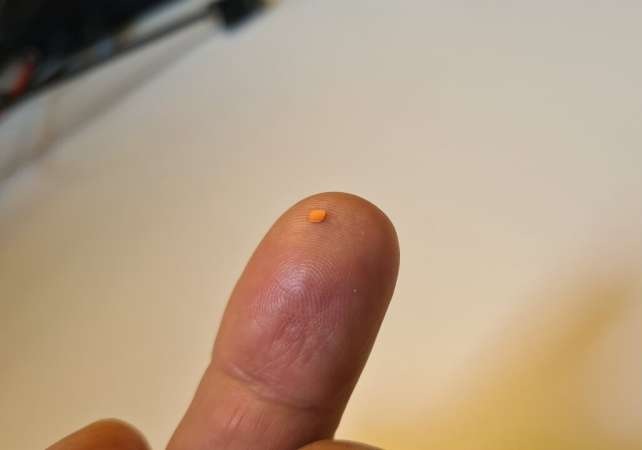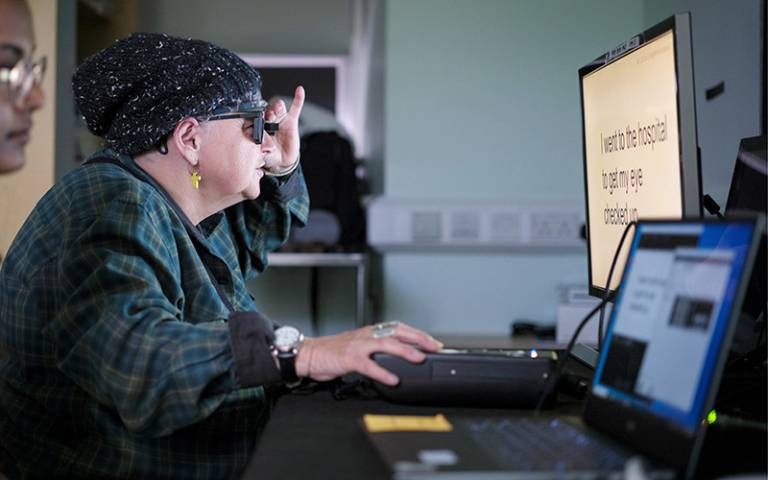In Augmented Reality News
October 21, 2025 – The results of a clinical trial published this week have shown that people with sight loss have recovered reading vision through the use of an electronic eye implant paired with augmented-reality (AR) glasses, marking a breakthrough in vision restoration.
Published in The New England Journal of Medicine, the study reported restored reading vision in participants whose sight had previously been lost due to an untreatable progressive eye condition.
The trial involved 38 participants across 17 hospital sites in five countries, including the UK’s Moorfields Eye Hospital. All participants had lost central vision in one eye due to geographic atrophy (GA), an advanced form of dry AMD for which no restorative treatments currently exist. The trial was testing a pioneering device known as PRIMA.
What is PRIMA and how does it work?
Science Corporation, a developer of brain-computer interfaces (BCIs) and neural engineering solutions, developed the PRIMA system, which consists of a wireless subretinal implant and AR glasses equipped with a video camera.
Participants underwent a surgical procedure to implant a 2mm x 2mm microchip beneath the retina. The AR glasses project near-infrared light onto the implant, which converts the signal into electrical impulses transmitted to the brain via retinal and optic nerve cells. Participants then completed a rehabilitation program to learn to interpret these signals as visual information.

What did the results of the trial show?
At 12 months post-implantation, 81% of participants achieved a clinically meaningful improvement in visual acuity, according to The New England Journal of Medicine, and 84% demonstrated the ability to read letters, numbers, or words using the prosthetic vision system, according to UCL.
On average, participants treated with the device were able to read five lines on a vision chart compared to baseline, with some participants not able to see the chart before their surgery. No significant decline in peripheral vision was observed, according to the study.

Can AR technology help people with vision loss see again?
Mahi Muqit, associate professor at the UCL Institute of Ophthalmology, senior vitreoretinal consultant at Moorfields Eye Hospital, and one of the co-authors of the study, said: “In the history of artificial vision, this represents a new era. Blind patients are actually able to have meaningful central vision restoration, which has never been done before.
“The PRIMA chip operation can safely be performed by any trained vitreoretinal surgeon in under two hours – that is key for allowing all blind patients to have access to this new medical therapy for GA in dry AMD.”
When will the PRIMA vision implant become available to patients?
While the trial does not give any timeline for commercialization of the PRIMA system, the findings represent an early step toward potential regulatory approval, a process that typically spans several years.
The study was led globally by Dr Frank Holz of the University of Bonn and supported by Science Corporation and the Moorfields National Institute for Health and Care Research Biomedical Research Centre.
For more information on Science Corporation and its neural engineering and brain-computer interface solutions, click here.
Image / video credit: Moorfields Eye Hospital / Science Corporation
About the author
Sam is the Founder and Managing Editor of Auganix, where he has spent years immersed in the XR ecosystem, tracking its evolution from early prototypes to the technologies shaping the future of human experience. While primarily covering the latest AR and VR news, his interests extend to the wider world of human augmentation, from AI and robotics to haptics, wearables, and brain–computer interfaces.
